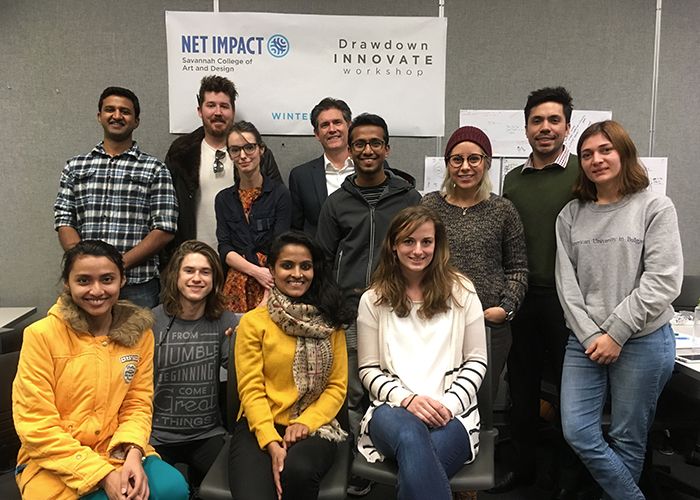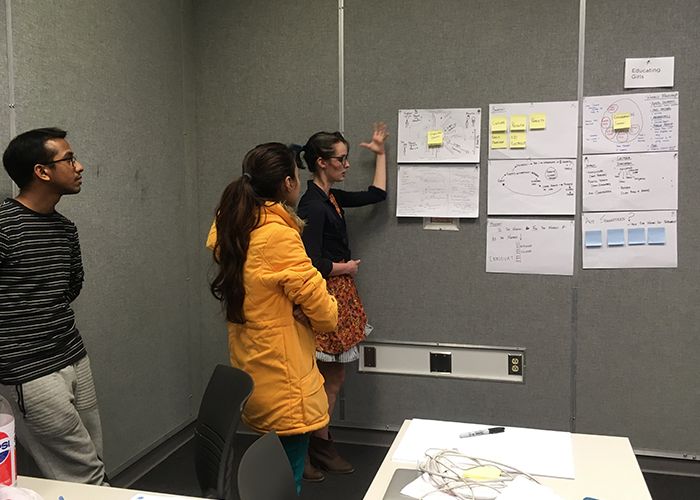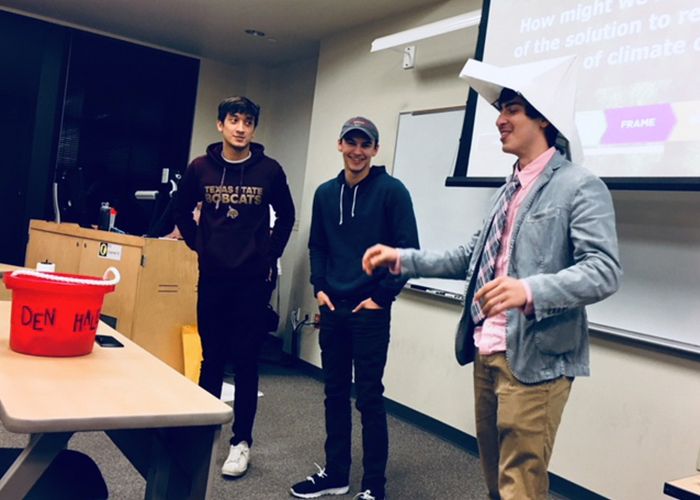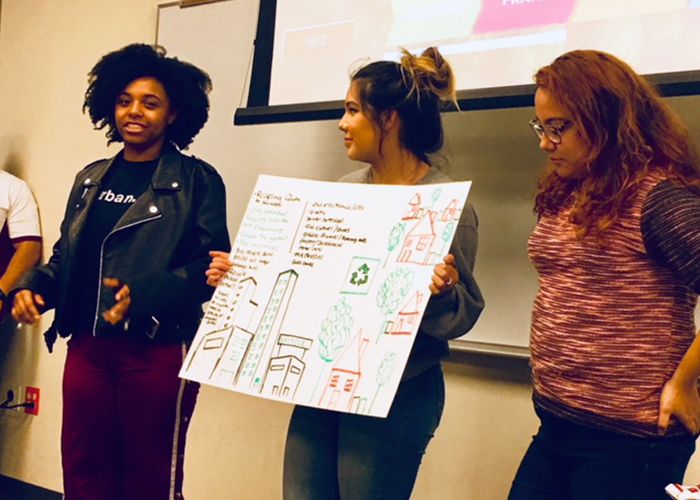In November of 2017, we announced our support of a student-led competition inspired by Paul Hawken’s Project Drawdown, which identifies 100 of the most substantive solutions to reverse global warming.
The competition, Drawdown: Innovate, was led by Net Impact and asked undergraduate and post-graduate students to work as teams to create business plans from a set of solutions identified by Hawken and his team. More than 450 of the brightest young minds from 29 Net Impact chapters across nine countries gathered to address global warming with actionable business plans. Students were instructed to pick from a select group of Drawdown solutions, including reduced food waste, industrial recycling, regenerative agriculture, educating girls, waste to energy, net zero buildings and living buildings.
Overwhelmingly and unsurprisingly, students chose food waste as the most addressable solution, with 14 projects aimed at reducing waste. Reduced food waste ranks as Drawdown’s third most impactful solution, and Drawdown reports that if 50 percent of food waste is reduced by 2050, avoided emissions could be equal to 26.2 gigatons of carbon dioxide.
Finalists focused on food waste, regenerative agriculture
A panel of judges from Net Impact and Interface judged the projects and found four projects to be outstanding, all in the field of food waste or regenerative agriculture:
- EatFresh – an app that helps stores and consumers avoid food waste, developed by students at Washington University
- Soil Sink – local carbon trading that provides incentive for more regenerative agriculture, created by a group of students from Columbia University
- LeftOwners – a food sharing and energy-conversion service for restaurants and eaters, ideated from the Savannah College of Art and Design
- E-Waste-Not – a website that aggregates best practices and resources for responsibly dealing with electronic waste, created at Northeastern University
EatFresh, LeftOwners and Soil Sink all participated in a weekend-long accelerator at the Net Impact headquarters in Oakland, California, where they worked with innovation consultants to refine their ideas for greater impact. The post-accelerator winner receives seed funding to actually put their business wheels in motion.
The Net Impact team from the Savannah College of Art and Design presented LeftOwners.
The Net Impact team from the Savannah College of Art and Design working on their presentation.
The Net Impact team from Texas State University
The Net Impact team from Texas State University
How the winning project uses carbon as a resource
After submitting a refined and revised project to Net Impact, a winner was selected from the finalists. The winning business plan, Soil Sink, applied the tenants of our “Love Carbon” strategy by using carbon as a resource, creating a business within the “carbon economy.”
Soil Sink identified a $1 million opportunity per 400-acre farm when using carbon as a resource. The group of students put forth a business plan that capitalizes on the carbon sunk in the soil by farmers practicing regenerative agriculture.
Essentially, Soil Sink would serve as brokers for the farmers by finding buyers within the California carbon market. The farmers would take the majority of the money from the sell, with Soil Sink taking a fee for brokering the deal. This would encourage more farmers to practice regenerative agriculture, thus sinking more carbon into the soil. The average 400-acre farm can sink as much as 24,000 tons of carbon dioxide per acre (or 87,950 tons of carbon dioxide per year) – that’s the equivalent of removing 19 cars from the road!
It’s this kind of innovative and inspired thinking that invigorates our hope for a climate fit for life. To learn more about Interface’s plan for reversing global warming, Climate Take Back, visit http://www.interface.com/climatetakeback.



